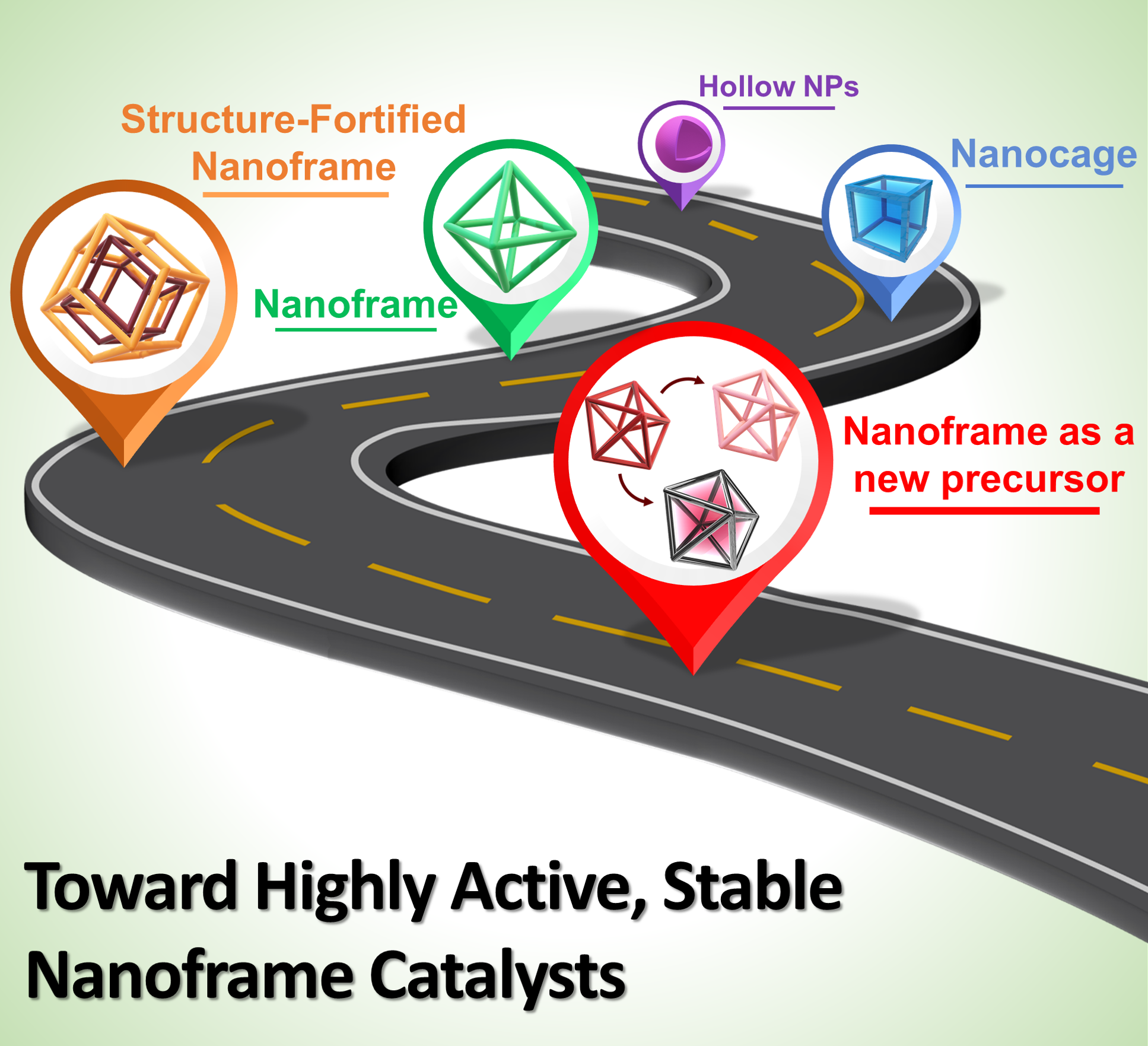

권태현 전민기
(공동 제1저자)
The ever‐increasing need for the production and expenditure of sustainable energy is a result of the astonishing rate of consumption of fossil fuels and the accompanying environmental problems. Emphasis is being directed to the generation of sustainable energy by the fuel cell and water splitting technologies. Accordingly, the development of highly efficient electrocatalysts has attracted significant interest, as the fuel cell and water splitting technologies are critically dependent on their performance. Among numerous catalyst designs under investigation, nanoframe catalysts have an intrinsically large surface area per volume and a tunable composition, which impacts the number of catalytically active sites and their intrinsic catalytic activity, respectively. Nevertheless, the structural integrity of the nanoframe during electrochemical operation is an ongoing concern. Some significant advances in the field of nanoframe catalysts have been recently accomplished, specifically geared to resolving the catalytic stability concerns and significantly boosting the intrinsic catalytic activity of the active sites. Herein, general synthetic concepts of nanoframe structures and their structure‐dependent catalytic performance are summarized, along with recent notable advances in this field. A discussion on the remaining challenges and future directions, addressing the limitations of nanoframe catalysts, are also provided.

https://doi.org/10.1002/adma.202001345
 Color‐Tunable Boron‐Based Emitters Exhibiting Aggregation‐Ind...
Color‐Tunable Boron‐Based Emitters Exhibiting Aggregation‐Ind...
 Highly Crystalline Hollow Toroidal Copper Phosphosulfide via ...
Highly Crystalline Hollow Toroidal Copper Phosphosulfide via ...

















